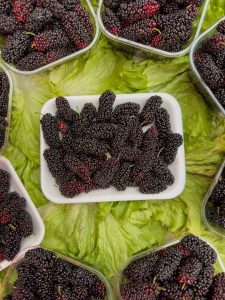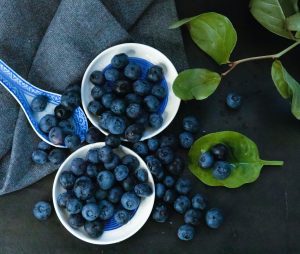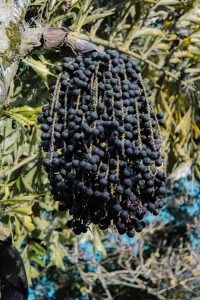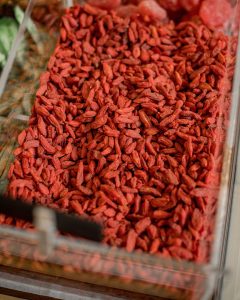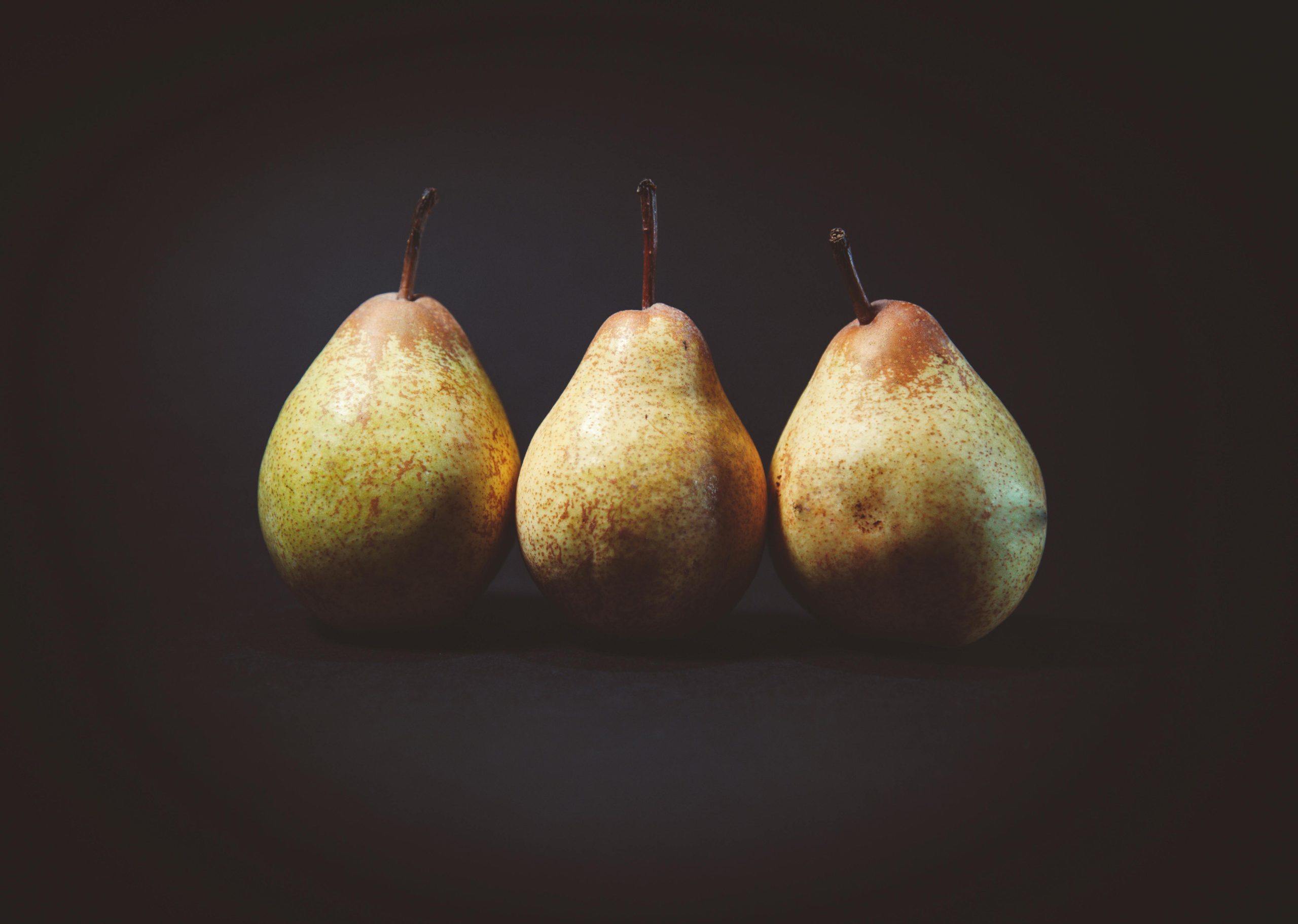
What Is a Pear?
A pear is a sweet and juicy fruit that belongs to the Rosaceae family and Pyrus genus. Characterized by its distinctive shape with a narrow neck and wider bottom, pears come in various varieties, each with unique flavors and textures. Common types include Bartlett, Anjou, Bosc, and Comice. Pears are typically harvested when they are still firm and allowed to ripen off the tree. The flesh can range from crisp and crunchy to smooth and buttery, depending on the variety and ripeness.
Pears are a good source of dietary fiber, vitamin C, and potassium. They are enjoyed both fresh and in cooked or preserved forms, such as in pies, jams, and sauces. The fruit’s versatility, nutritional content, and delicious taste make pears a popular choice for snacking and culinary applications around the world.
Why Do We Eat Pears?
People eat pears for a variety of reasons, including their delicious flavor, nutritional benefits, and versatility in culinary applications. Here are some reasons why pears are commonly consumed:
- Sweet Flavor:
- Pears have a naturally sweet and juicy flavor that makes them a tasty and satisfying fruit to eat fresh.
- Nutrient Content:
- Pears are a good source of dietary fiber, vitamin C, potassium, and antioxidants. These nutrients contribute to overall health and well-being.
- Digestive Health:
- The fiber content in pears aids in digestion and helps prevent constipation. Eating pears can support a healthy digestive system.
- Weight Management:
- Pears are relatively low in calories and high in fiber, making them a nutritious and filling snack that can contribute to weight management.
- Versatility in Cooking:
- Pears can be used in a variety of culinary preparations, both sweet and savory. They are commonly used in salads, desserts, jams, sauces, and baked goods.
- Hydration:
- Pears have a high water content, which contributes to hydration and can be beneficial for overall health.
- Texture Variability:
- Depending on the variety and ripeness, pears offer a range of textures, from crisp and crunchy to smooth and buttery, providing options for different preferences and culinary uses.
- Seasonal Availability:
- Pears are typically in season during the fall and winter, providing a fresh and seasonal fruit option during those times.
Overall, the combination of a delightful taste, nutritional value, and culinary versatility makes pears a popular and enjoyable fruit for consumption in various forms and dishes.
When Do We Eat Pears?
Pears can be enjoyed at various times of the day and incorporated into different meals and snacks. Here are common occasions and ways people eat pears:
- Fresh Snacking:
- Pears are often eaten fresh as a healthy and convenient snack. Simply wash and slice them for a quick and refreshing treat.
- Breakfast:
- Add sliced pears to your breakfast routine by including them in cereal, yogurt, or oatmeal. They can also be a delicious addition to smoothie bowls or as a topping for pancakes and waffles.
- Salads:
- Pears can enhance the flavor and texture of salads. Combine sliced or diced pears with greens, nuts, cheese, and a vinaigrette for a tasty salad.
- Cheese Pairing:
- Pears pair exceptionally well with various cheeses. Enjoy them alongside a cheese board or as part of a cheese and fruit platter.
- Desserts:
- Pears are commonly used in desserts such as pies, tarts, crisps, and cobblers. Baked or poached pears can be served with a drizzle of honey or a scoop of vanilla ice cream for a delightful treat.
- Cooking:
- Pears can be incorporated into cooked dishes, such as savory sauces for meats or roasted alongside vegetables for a sweet and savory side dish.
- Preserves and Jams:
- Pears can be transformed into preserves, jams, or chutneys, providing a flavorful spread for bread, crackers, or as a condiment for various dishes.
- Beverages:
- Pears can be used in beverages like smoothies, juices, and cocktails, adding a natural sweetness and refreshing flavor.
The versatility of pears allows them to be enjoyed in a wide range of culinary applications, making them a flexible and delicious addition to meals throughout the day.
Ingredients of Pears
The composition of pears includes a mix of macronutrients, micronutrients, and water. Here are the main components found in pears:
- Water:
- Pears have a high water content, contributing to their juicy and hydrating nature.
- Carbohydrates:
- Pears are a good source of carbohydrates, primarily in the form of natural sugars such as fructose and glucose. The carbohydrates provide the sweet taste of the fruit.
- Dietary Fiber:
- Pears are rich in dietary fiber, which is essential for digestive health. Fiber aids in preventing constipation and promoting regular bowel movements.
- Vitamins:
- Pears contain various vitamins, with vitamin C being one of the most prominent. Vitamin C is an antioxidant that supports the immune system and helps the body absorb iron.
- Minerals:
- Pears provide minerals such as potassium, which is important for heart health and maintaining proper fluid balance in the body.
- Phytochemicals:
- Pears contain phytochemicals, which are naturally occurring compounds with potential health benefits. These include antioxidants that help combat oxidative stress.
- Flavonoids:
- Pears, especially in their skins, contain flavonoids, which are plant compounds associated with various health-promoting properties.
It’s worth noting that the specific nutrient content can vary slightly depending on the pear variety and ripeness. Additionally, a significant portion of the nutrients and fiber is found in the skin, so consuming the skin provides additional health benefits. Pears are a nutritious and flavorful fruit, offering a combination of sweetness, juiciness, and health benefits.
Types of Pears
There are numerous varieties of pears, each with its own unique flavor, texture, and color. Here are some common types of pears:
- Bartlett Pear (Williams or Williams’ Bon Chrétien):
- One of the most popular pear varieties, Bartlett pears are known for their smooth texture, sweet flavor, and yellow-green skin that turns yellow as it ripens.
- Anjou Pear:
- Anjou pears come in both red and green varieties. They have a dense and juicy texture, with a sweet and mild flavor. Unlike some other pears, Anjou pears do not change color significantly as they ripen.
- Bosc Pear:
- Bosc pears have a distinctive elongated and tapered neck with a russeted brown skin. They have a dense and crisp texture, making them suitable for baking and poaching. The flavor is sweet and aromatic.
- Red Bartlett Pear:
- Similar to the classic Bartlett, the Red Bartlett has a red skin that ripens to a vibrant red or yellow color. It shares the same sweet and juicy characteristics as the traditional Bartlett pear.
- Comice Pear:
- Often referred to as the “Christmas pear,” Comice pears are known for their succulent, buttery texture and sweet flavor. They have a green or yellow skin with a red blush.
- Concorde Pear:
- A cross between the Comice and Conference varieties, the Concorde pear has a long, slender neck and a tan skin. It boasts a sweet flavor and a dense, creamy texture.
- Seckel Pear:
- Seckel pears are small and round with a maroon or dark red skin. They have a sweet and spicy flavor, and their small size makes them ideal for snacking or as a decorative addition to dishes.
- Forelle Pear:
- Forelle pears are small and have a yellow-green skin with red freckles. They have a sweet and tangy flavor and a crisp texture.
- Asian Pear:
- Also known as apple pears, Asian pears are round and crisp, resembling apples in texture. They come in various varieties, such as Shinko and Hosui, and have a sweet, juicy flavor.
- Starkrimson Pear:
- Starkrimson pears have a vibrant red skin and a sweet, juicy flesh. They are similar in taste and texture to the traditional Bartlett pear.
These are just a few examples of the many pear varieties available. The taste, texture, and appearance of each pear type can vary, providing a diverse range of options for culinary use and personal preference.
Signs of Ripe, Signs of Raw and Signs of Rotten Pears
Recognizing the ripeness, freshness, and potential spoilage of pears involves paying attention to various visual and sensory cues. Here are signs to help you distinguish between ripe, raw, and potentially rotten pears:
Signs of Ripe Pears:
- Color:
- Look for a change in color. Depending on the variety, ripe pears may exhibit a shift in hue, such as a deepening of green, yellow, or red.
- Firmness:
- Ripe pears should yield slightly to gentle pressure at the stem end. Apply gentle pressure near the stem to check for a slight give.
- Fragrance:
- Ripe pears often have a sweet and fruity aroma near the stem. Smell the area around the stem for a pleasant fragrance.
- Texture:
- The flesh should be firm yet yield slightly when pressed. Avoid pears that are excessively soft or mushy.
Signs of Raw Pears:
- Color:
- Raw pears may have a more uniform and less vibrant color. They might be lighter in hue and firmer to the touch.
- Firmness:
- Raw pears will be firmer and less yielding than fully ripe ones. They may not have the same slight give near the stem.
- Taste:
- Raw pears might have a less developed sweetness compared to fully ripe pears. The texture may also be crisper.
Signs of Rotten Pears:
- Mold:
- Check for any visible signs of mold on the skin or near the stem. Discard pears with mold, as it can spread quickly.
- Off Odors:
- Rotten pears may emit unpleasant or fermented odors. If the pears smell off or sour, they may be spoiled.
- Wrinkling:
- Pears that have started to wrinkle or appear shriveled are likely overripe or beginning to spoil.
- Soft Spots:
- Press gently on various parts of the pear. If you feel excessively soft or mushy areas, the pear may be rotting.
When selecting pears, it’s important to consider the specific variety, as ripening cues can vary. Proper storage in a cool place and regular checks for ripeness can help ensure that you consume pears at their optimal stage.
Summary
Pears are a diverse group of fruits with various types, including Bartlett, Anjou, Bosc, and Comice, each offering unique flavors and textures. These fruits are enjoyed for their delicious taste, versatility in culinary applications, and nutritional benefits.
Key Points:
- Pears are consumed for their sweet and juicy flavor, making them suitable for fresh snacking, breakfast, salads, desserts, and beverages.
- Common types of pears include Bartlett, Anjou, Bosc, Comice, Concorde, Seckel, Forelle, Asian, and Starkrimson, each with distinct characteristics.
- Pears are rich in water, carbohydrates, dietary fiber, vitamins (especially vitamin C), minerals (such as potassium), and phytochemicals.
- Recognizing ripeness is crucial: ripe pears have a changed color, slight firmness, sweet aroma, and a firm yet yielding texture.
- Raw pears are firmer, less sweet, and exhibit a less vibrant color compared to fully ripe ones.
- Signs of rotten pears include mold, off odors, wrinkling, and soft spots.
Overall, pears are a flavorful and nutritious fruit that can be enjoyed in various ways, contributing to a balanced and diverse diet. Proper selection and storage ensure optimal ripeness and freshness.

